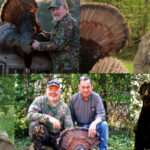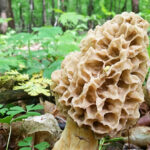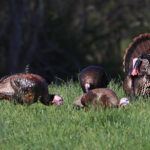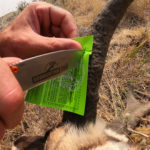How long can bowhunters function without their smartphone and good cellular service?
Jason Munz, 42, of Eau Claire, Wisconsin, made it roughly four hours November 8th while bowhunting his parents’ farm between Avoca and Highland in southwestern Wisconsin. It wasn’t easy. Much like an amputee’s phantom sensations from a long-lost limb, Munz kept grabbing for his smartphone hours after leaving it at his parents’ house before noon.
“I was embarrassed how many times I reached for a phone that wasn’t there,” Munz said. “I was 18 feet up a tree in my portable climber when I realized I didn’t have it. Even then, my first thought was to text my dad to bring it to me. And seconds later, I thought about saving my spot as a waypoint on my onX Maps app. That was the first time I’d hunted from that tree.”
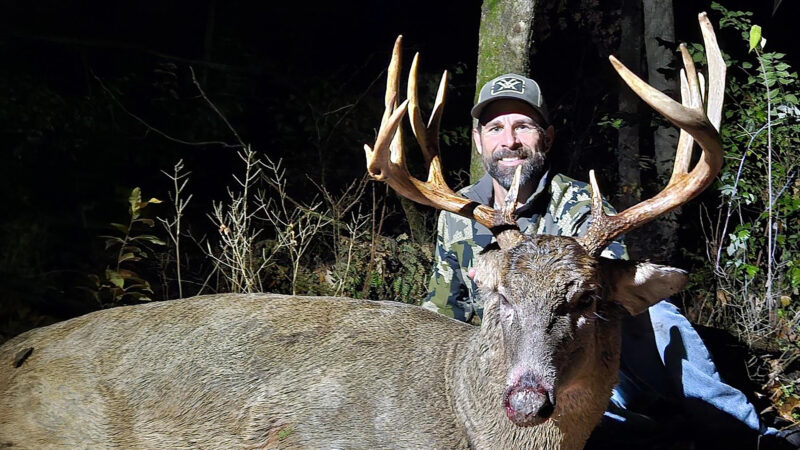
Four hours into his hunt, yet another futile thought crossed Munz’s mind after he arrowed the biggest buck of his life. He again reached for the phantom phone, thinking he’d use onX Maps to estimate the distance to where he saw the buck collapse.
After laughing off those reflexive moves, Munz descended and walked back to his parents’ house. He told his dad, Jim Munz, the good news, retrieved his smartphone, and called his cousin, Matt Bomkamp, to ask for help retrieving the buck.
Munz knew the buck was no ordinary deer. He and his family had seen it in scores of photos from trailcams placed around their 170-acre farm. The mature buck carried large, gnarly antlers with distinctive forks on the second tine (G-2s) of each beam. No one had seen the buck in daylight, and they had only two daytime photos of it on their trailcams. Even so, Munz recognized it instantly when it hound-dogged a doe into bow range.
“The woods were still wet from a morning mist, so I didn’t hear the doe until she was right below me,” Munz said. “Her mouth was kind of curled and she was holding her tail funny, so I figured a buck was following her. She trotted within 12 yards before getting downwind of me. Then she stopped, looked my way, and lifted her nose to test the wind.
“Then I heard a buck grunting behind her on the trail. When the doe turned away, I grabbed my bow and clipped my release to the string. The buck was trotting in when I looked over my shoulder. When I saw a big tine with a fork, I started turning 180 degrees while drawing my bow. He stopped and looked at me just as I got the sight-pin on him. When I released, he went straight into the ground, and then turned himself around and ran off. As he ran, I could see he wouldn’t get far.”
Munz arrowed the buck at 17 yards about 4 p.m., and saw it fall. He then sneaked out of his stand, marked the start of the buck’s blood trail, and walked out to get his dad and cousin. “I wanted to make sure my dad saw it before he went into town for a village board meeting at 6 o’clock,” Munz said. “We got back to it just before dark.”
The buck’s 12-point rack measured 18 inches between the beams. Munz said his cousin “is anxious to score everything,” and sure enough, Bomkamp wasted no time using his tape-measure to gross-score the antlers at 160-3/8 inches on the Boone and Crockett scale. Munz estimated its age at 4.5 years.
Munz said it’s the biggest buck he’s shot on his parents’ farm. He first bowhunted there in 1993 at age 12, and arrowed his first deer that year. The farm has been in the family since John Munz bought it in 1863. Farming its lands hasn’t been easy. Munz said the land rests at the edge of ancient glaciers, which left behind rocks “the size of Volkswagens.” He still doesn’t know how his ancestors cleared enough old trees and rocks “as big as Rhode Island” to create farmlands, but the largest field covers 17 acres.
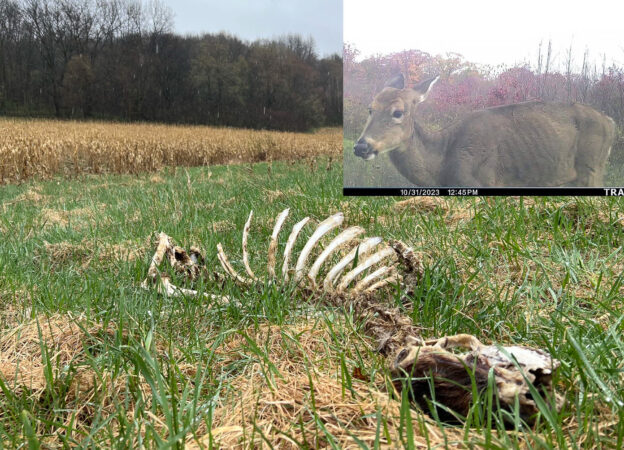
The farm’s history took an unexpected turn in 2002 when the Department of Natural Resources discovered chronic wasting disease in Iowa County. The county has long led Wisconsin in CWD cases—4,160 all time as of November 9, including 28 so far this year.
Munz said he and his family still enjoy hunting the farm and probably always will, given their 160-year connection. His 12-year-old son, Hunter, shot two does there during the state’s youth gun season October 7-8.
Still, as CWD spread in the region the past two decades, deer hunting has grown more difficult. Munz said his family sees increasingly fewer deer each fall, while finding more “deadheads” —buck skulls with antlers still attached. Munz said they rarely found deadheads during his youth, but his father found six of them this past spring, including an impressive rack that scored 140 B&C inches.
“My buck is the top end of what we see now,” Munz said. “We never noticed him in our trail cam photos until this year. That’s the pattern. Once a buck catches our attention on our trail cams, if we don’t shoot him that year, we never see him again. Maybe someone a few farms away gets those bucks, but we don’t know. The big bucks just disappear. One year we had lots of photos of a buck bigger than mine, including one photo in January on the last day of archery season. We thought we might see him again that fall, but we never did.”
CWD typically kills deer within 18 to 24 months of when they’re infected. DNR research also found that CWD makes deer more vulnerable to other illnesses, infections, predators, hunting and motor vehicles.
Still, as with most hunters, Munz and his family have no plans to hunt deer elsewhere.
“Deer hunting the farm is part of our tradition,” he said. “It’s what we’ve always done and always will do. It’s the sum of its parts. If I hunted somewhere else, I couldn’t share and embellish the new and old stories with friends and family. We also enjoy securing and sharing our own meat.
“Each hunt is unpredictable, and has some degree of ‘suck’ to it,” Munz continued. “If you take any of that away, the experience loses something.”

 By
By 